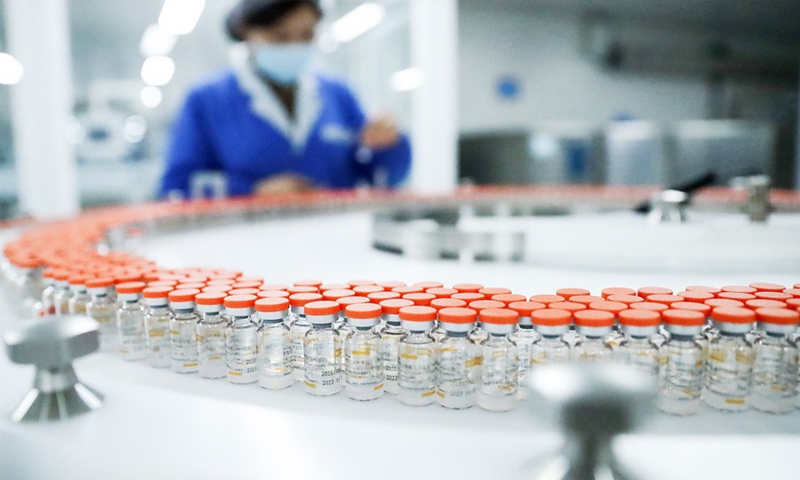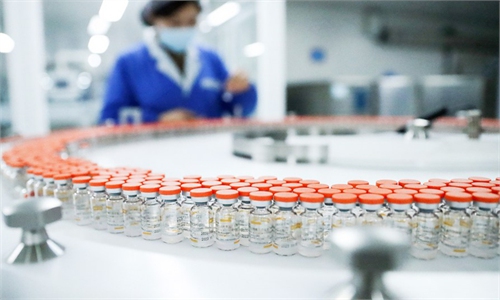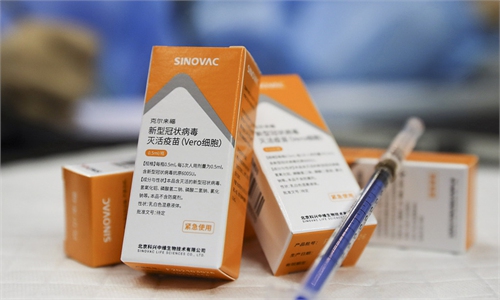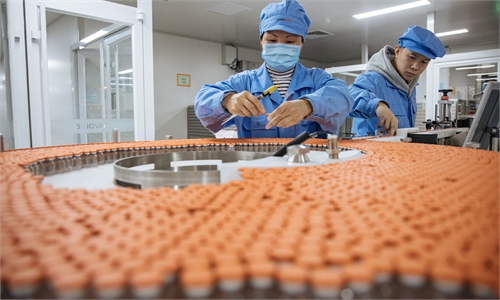Inactivated vaccine effectiveness against complications caused by the Delta variant reaches 51%

A staff member checks tags on vials of COVID-19 vaccine at a packing line of Sinovac Life Sciences Co., Ltd. in Beijing, capital of China, December 23, 2020. Photo:Xinhua
Preplanned studies on the effectiveness of vaccines for people who had already completed their primary course of vaccination with inactivated COVID-19 vaccines against COVID-19 symptoms, COVID-19 pneumonia, and severe COVID-19 caused by the Delta variant were 51 percent, 61 percent, and 82 percent respectively, a new thesis published in the Chinese CDC Weekly shows.
Research conducted by the Chinese Center for Disease Control and Prevention was carried out in Zhengzhou, the capital city of Central China's Henan Province where 74.8 percent of the city's residents aged between 18 and 59 and 46.4 percent of its residents aged above 60 had been completely vaccinated as of July 17, 2021. Over 98 percent of all adults who were vaccinated received an inactivated COVID-19 vaccine.
The research team used a case-control design to determine the ability of inactivated vaccines to prevent progression from mild to moderate or severe illness, finding that complete primary vaccination reduced the risk of progression by 74 percent, demonstrating good effectiveness in the real-world study.
Vaccine effectiveness estimates for China's two inactivated vaccines (Sinopharm's BBIBP-CorV and Sinovac's CoronaVac) or combined vaccination were similar, while partial vaccination was ineffective.
Five vaccine development techniques are currently being used to develop and produce COVID-19 vaccines in China: whole-virus inactivated, adenovirus vectored, recombinant protein subunit, nucleic acid, and attenuated influenza virus vectored vaccines. Inactivated vaccines are in the most widespread use in China, covering over 85 percent of all COVID-19 vaccine doses administered. Two manufacturers — Sinopharm and Sinovac — provide the largest share.
China initiated a large domestic COVID-19 vaccination campaign on December 15, 2020. In June and July 2021, the Delta variant began to cause outbreaks in China, including a 167-case, hospital-centered, Delta-variant outbreak in Zhengzhou which was initiated by an asymptomatic infection confirmed on July 30, 2021 at The Sixth People's Hospital of Zhengzhou.
On July 31, 2021, a local cluster of COVID-19 cases was identified through PCR screening in the hospital. The virus was isolated and sequenced, showing that the cluster was caused by the Delta variant. The last case occurred on August 24.
The epidemic consisted of 167 infections, with 166 symptomatic and one asymptomatic; 139 cases were in Zhengzhou. A total of 14 infections were among children below 18 years of age, and eight were among individuals vaccinated with a vaccine other than BBIBP-CorV or CoronaVac.
Sinopharm and Sinovac vaccines are frequently used in the same population at the same time, providing an opportunity for single-study estimates of vaccine effectiveness against the Delta variant by vaccine brand.



